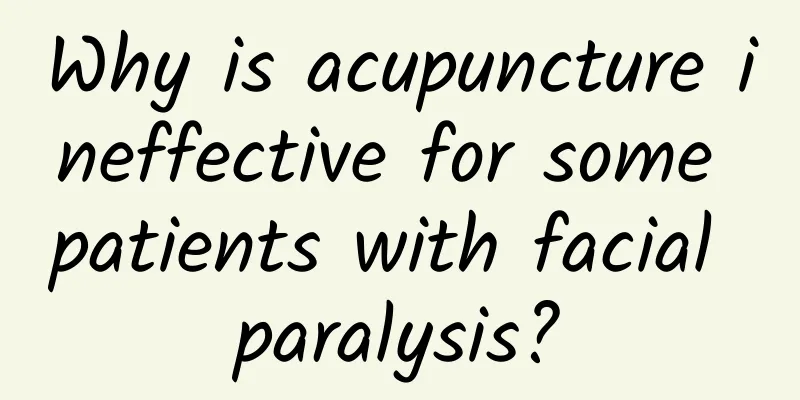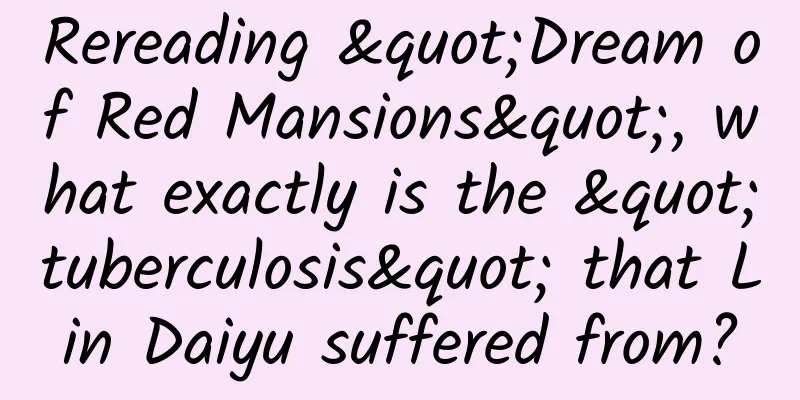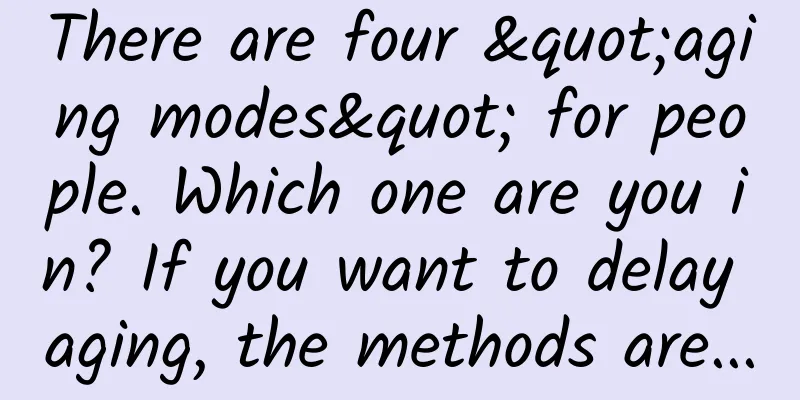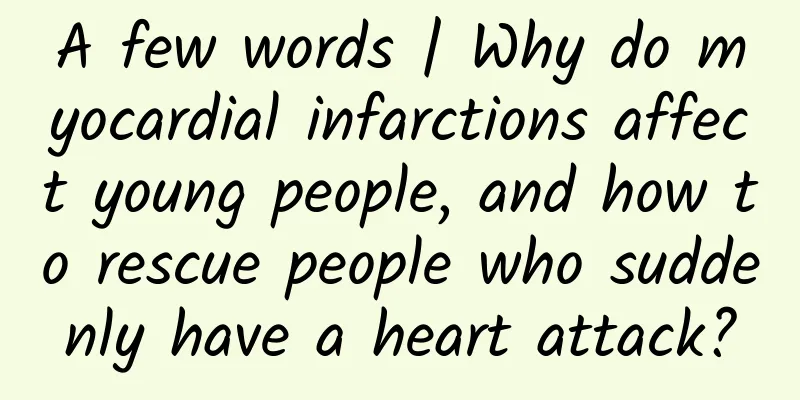Why is acupuncture ineffective for some patients with facial paralysis?

|
As early as 1979, the World Health Organization identified and recommended "facial paralysis" among the 43 diseases suitable for acupuncture treatment; on January 1, 1998, the "Universal Medical Procedure Code" edited by the American Medical Association also officially included acupuncture therapy, believing that it is one of the real and effective methods for treating facial paralysis (1). However, in clinical work, patients with facial paralysis often fail to recover after long-term treatment, and have varying degrees of sequelae such as eyebrow lifting, incomplete recovery of perioral muscles, synkinesis, contracture, ptosis, crocodile tears and facial muscle spasm, which cause physical and mental harm to patients. So why is acupuncture a strong point and the first choice for the treatment of facial paralysis, but why are there patients who are ineffective? This is related to many aspects. The following is a share of my experience and experience in the treatment of facial paralysis with acupuncture for more than 20 years, so as to stimulate discussion. First, let's briefly understand the local distribution of the facial nerve. The facial nerve nucleus is divided into upper and lower parts. The upper part of the tissue is innervated by the motor area of the cerebral cortex on both sides, and the motor fibers emitted by it innervate the muscles around the eyes; while the lower part of the tissue is only innervated by the motor area of the contralateral cerebral cortex, and the motor fibers emitted by it innervate the muscles around the lips. When the tissues above the facial nerve nucleus, i.e., the cerebral cortex, brainstem, internal capsule, etc., are lesioned, it can be manifested as paralysis of the muscle tissue around the lips on the opposite side of the lesion. Clinically, it can be seen from top to bottom that the nasolabial groove becomes shallower, the nose cannot be raised, the corners of the mouth droop when showing teeth (or the corners of the mouth are tilted to the side of the lesion, that is, the side opposite to the paralyzed facial muscles), the whistle cannot be whistled and the cheeks puffed (the corners of the mouth will leak air), drooling, and the mouth is tilted to one side. The eye muscles on that side are not affected, that is, the muscles around the eyes will not have lesions, which is normal. Most of the time, the supranuclear tissues (including the cortex, cortical brainstem fibers, internal capsule, pons, etc.) are damaged, causing paralysis of the lower facial muscles on the opposite side of the lesion. It is more common in cerebrovascular diseases, brain tumors and encephalitis, and is called "central facial paralysis". It is common in sequelae of cerebral stroke caused by hypertension and cerebral arteriosclerosis, cerebral thrombosis, cerebral infarction, brain tumors, brain trauma, brain inflammation, etc. In addition, there are atrial fibrillation of rheumatic heart disease, and cerebral embolism caused by the detachment of emboli from bacterial endocarditis. Of course, there are also symptoms of different diseases, such as hemiplegia, aphasia, high blood pressure, heart murmurs, etc. When the tissues below the facial nerve nucleus are diseased, the muscles around the eyes innervated by the upper half of the facial nerve nucleus and the muscles around the lips innervated by the lower half will be affected at the same time, which is manifested as paralysis of the upper and lower facial muscles on one side at the same time. Clinically, it can be seen from top to bottom that the forehead cannot be wrinkled, the eyebrows are frowned, the corneal reflex disappears, the eyelids are weak or completely unable to close, resulting in constant tears, shallow nasolabial grooves, inability to show teeth, puff cheeks, whistle, drooping corners of the mouth (or the corners of the mouth are tilted to the opposite side of the lesion, that is, the opposite side of the paralyzed facial muscles), and taste disorders in the front 2/3 of the tongue may also occur. It is caused by damage to the facial nerve nucleus or facial nerve, and all facial muscles on the same side of the lesion are paralyzed. It is more common in peripheral facial nerve paralysis caused by cold, ear or meningeal virus infection, and neurofibroma. It is called "peripheral facial paralysis"; "simple facial paralysis"; "facial neuritis". Generally speaking, if it is "central facial paralysis." The possibility of complete recovery is small, and there will be certain sequelae. If it is "peripheral facial paralysis", the chance of having sequelae is very small. The timing and method of acupuncture treatment will directly affect the treatment effect and prognosis. In order to reduce the chance of facial paralysis sequelae, it is important to detect it early and go to the acupuncture department of a regular hospital in time and receive acupuncture treatment in a systematic and standardized manner. We have already known the local distribution of the facial nerve, and we also know that facial paralysis is caused by the facial nerve nucleus causing damage to the peripheral facial nerve and failing to control the facial muscles. At the beginning of the disease, the facial nerve is only in a local lesion state in the aforementioned part, while the facial muscles are normal. It is just that the nerve command system is impaired and cannot function normally. The facial muscles have not completely lost their ability to move due to time. As long as the corresponding, correct and timely treatment measures can be taken to make their command function normally, the facial muscle activity will recover quickly. From the perspective of traditional Chinese medicine, whether facial paralysis is caused by the invasion of wind-cold or wind-heat, the root cause is the patient's own weakness of positive energy, the emptiness of the meridians, which causes the qi and blood to not function normally, and the facial muscles are induced by malnutrition. Early intervention with correct acupuncture can help superficial evil qi to escape and restore righteous qi, thus achieving the effect of "righteous qi stored inside, evil qi cannot interfere", allowing qi and blood to flow in a balanced and normal manner to nourish the face and promote normal activity of the affected side muscles. Electroacupuncture therapy is a product of the integration of traditional Chinese and Western medicine. It uses the low-frequency pulse current output by the acupuncture treatment instrument to act on acupoints, meridians or a specific part through the needles to achieve the treatment of diseases. Studies have found that (2) and (3) electroacupuncture therapy can relax facial nerve muscles, dilate blood vessels, improve blood circulation, and fully restore microcirculatory blood flow through electric pulse stimulation of human acupoints, thereby restoring and improving the abnormal metabolism of the affected side of the face, and the local internal circulation disorder tends to be normal, and the paralyzed facial muscles are also restored to normal. However, in clinical work, the author has realized that for facial paralysis, if long-term, high-intensity, high-frequency repeated electroacupuncture stimulation is used, it will cause the qi and blood to be broken, making the positive qi more weak, and the evil qi lingering, resulting in the phenomenon of muscle adaptation (muscle fatigue) in the affected part, which will not only aggravate the condition and increase the difficulty of treatment, but also cause sequelae such as perversion, synkinesis, contracture, and facial spasm. This is because under normal physiological conditions, the nerve membrane is semi-permeable, with cations on the surface of the nerve membrane and anions inside the membrane. If improper and frequent electroacupuncture stimulation is used on the affected part, the permeability of the nerve membrane will be accelerated and depolarization will occur, resulting in changes in the permeability of the facial nerve membrane, which will rearrange the anions and cations, causing the local tissue to be in a state of continuous congestion, reducing the excitability of the nerves, and causing the facial nerve cells to fatigue. The condition is in a relatively static state, resulting in edema of the muscles in the facial paralysis area, which is not conducive to recovery (4). Similarly, during the entire treatment process, the patient frequently rubs the facial muscles on the affected side with his hands. Once the rubbing causes the affected muscles to sag, it will be irreversible! Of course, asking the patient to perform appropriate forehead and facial activities such as raising eyebrows, wrinkling noses, blinking, puffing cheeks, and blowing air, and try to use the affected side to eat, chew gum, etc., can strengthen the flexibility of facial muscles and stimulate peripheral nerves, which is effective for the rehabilitation of facial paralysis and is worth promoting. Therefore, the author reminds everyone that although acupuncture should be used as the first choice for treatment as early as possible in the acute stage of facial paralysis, the stimulation intensity is far greater than that of twisting manipulation, and it has a certain effect on muscle recovery and repair of nervous system damage. However, repeated inappropriate, frequent, and long-term stimulation will further damage the positive energy, cause evil energy to linger, break the energy and injure the blood, and cause muscle adaptation in the affected area (muscle fatigue), which will aggravate the condition, greatly increase the possibility of sequelae, and increase the difficulty of treatment. Electroacupuncture should be used with extreme caution! The third point is the patient's own problem. If the patient has always been in poor physical condition and has been suffering from long-term illness, or has diabetes, cardiovascular and cerebrovascular diseases, etc., it is not conducive to the recovery of facial paralysis. Another point is that the patient is "afraid" of leaving sequelae, and "takes multiple measures" under the "concern" of colleagues, friends, and relatives, and seeks medical treatment from many places, but cannot concentrate on using one method for treatment. The muscle function of the affected part will not be restored, but the disorder will be aggravated, leading to the occurrence of sequelae. Although facial paralysis, a disfiguring disease, does not cause any great harm to the patient's body, it puts a lot of psychological pressure on the patient. In addition, the probability of complete recovery without any sequelae is relatively small. It can be said that 100% of patients with peripheral facial paralysis have different degrees of psychological pressure from the beginning of the disease, especially young women. After the onset of the disease, they will experience mental tension, abnormal emotions, anxiety, eagerness to recover, changes in life and work rules, poor sleep and other extreme uneasy performances. Basically, it is a vicious cycle of facial paralysis → anxiety → insomnia → multi-method treatment → muscle fatigue → general efficacy → more anxiety, which undoubtedly sets a great obstacle to the recovery of the disease. From the perspective of traditional Chinese medicine, "the heart opens to the face", because "uneasy mind" will make the heart outside the orifice in a tense state for a long time and cannot relax, which is also not conducive to the recovery of facial paralysis⑷. This requires doctors to communicate more with patients, introduce some rehabilitation cases, relieve patients of ideological burden and psychological pressure, and cooperate with doctors with a positive attitude and the courage to overcome the disease. At the same time, patients should be advised to arrange their diet and daily life reasonably, achieve balanced nutrition, go to bed early and get up early, watch less (no) TV (books), play less (no) mobile phones (computers), and close their eyes more to rest their eyes. Wear glasses when going out (wear sunglasses at noon to avoid ultraviolet rays to the eyes), wear a scarf and a mask when it is cool and windy. Do not rinse your mouth or wash your face with cold water, and avoid eating raw, cold and spicy food. Do not use electric fans (air conditioners) on your face, and avoid wind and cold when riding in a car. Some people may ask whether the treatment of facial paralysis by Western medicine, which mostly uses vitamin B1, vitamin B12, niacin, prednisone, virazole, antibiotics and other drugs, will leave sequelae? According to the author's clinical observation, these treatments can only be regarded as "a drop in the bucket" symptomatic and comforting treatments for facial paralysis, especially in the early stage of the disease. Intravenous drip is even more inappropriate. Most patients who have not received good results after oral and intravenous drip treatment with Western medicine (especially high-dose hormone shock therapy) and then come for acupuncture treatment have a poor prognosis and most patients may experience general fatigue, listlessness, drowsiness and other negative effects that are not conducive to facial muscle excitement and repair two to three weeks after the onset of the disease. Among them, the author believes that the cause should be related to the use of high-dose hormone shock therapy in the early stage of the disease, which causes a series of metabolic disorders of sugar, protein, fat, water and electrolytes in the body and body temperature regulation disorders, destroying the body's defense system and suppressing the immune response ability, but resulting in annoying complications. Whether it is correct, I would like to ask colleagues to further study and demonstrate it. In addition, signs of facial paralysis are difficult to reverse, such as severe ear herpes, viral invasion of the geniculate ganglion, and damage to nerve fibers leading to facial nerve degeneration. External auditory canal osteoma, middle ear cholesteatoma, acoustic nerve sheath tumor, etc. compress the facial nerve and cause facial paralysis. Facial nerve damage caused by surgeries such as middle ear tumor resection and radical mastoidectomy are also difficult to treat with acupuncture. References [1] Xing Jinyun, Ren Xiumei. Clinical efficacy of warm acupuncture in the treatment of acute peripheral facial paralysis[J]. Journal of Clinical Acupuncture, 2014, 30(2): 25-28. [2] Huang Xiaoai, Li Yaxue, Sun Shentian. Application of different electroacupuncture waveforms in the treatment of sequelae of facial paralysis [J]. Journal of Clinical Acupuncture, 2007, 23 (10): 91-92. [3] Pan Hua, Li Yuran. Comparative study of electroacupuncture and conventional acupuncture in the treatment of peripheral facial nerve paralysis [J]. Chinese Acupuncture, 2004, 24 (8): 77-79. [4] Cai Xiaogang. Why is acupuncture ineffective for some patients with facial paralysis? Health News [N]. 2008-09-25. Friday, January 5, 2024 Special statement: 1. Chinese medicine believes that individuals are different and the four seasons are different. If you need the above content, please use it under the guidance of a specialist! 2. The above content was published in the "Health Daily" on September 25, 2008. The final right of interpretation belongs to the original author, Cai Xiaogang from the Acupuncture Department of Hongdong County Traditional Chinese Medicine Hospital, Shanxi Province! 3. Please do not copy or reprint without authorization! |
Recommend
Can I use cupping during my period?
Cupping is a traditional Chinese medical treatmen...
Is cervical erosion of degree 3 serious?
Cervical erosion is the most common type of gynec...
Smoking is harmful, but littering cigarette butts is even more dangerous
This is the 5265th article of Da Yi Xiao Hu Recen...
The harm of girls not eating breakfast
The pace of life nowadays is very fast. Many girl...
What does a girl look like below
The private parts of girls usually refer to their...
Symptoms of Trichomonas vaginitis, you should know how to make the correct judgment after reading this
There are many reasons for vaginitis in women, on...
What are some tips for removing stretch marks?
I believe everyone is familiar with stretch marks...
How to eat macadamia nuts? Macadamia nuts are good for the skin
Macadamia nuts are rich in nutrition, crispy and ...
What is the reason for menstruation after 2 years of menopause?
Regular menstruation is what many women want, but...
To prevent and control myopia in children and adolescents, you may want to try these traditional Chinese medicine treatments
"Online classes", "Complete homewo...
Why can't you eat mango during menstruation?
Mango is rich in fiber. Many people think that ma...
How to correct sagging breasts?
The problem of sagging breasts not only troubles ...
What to do if you have blackheads and large pores on your face? There are ways to remove blackheads
Many women have blackheads on their faces, which ...
The harm of eating fermented bean curd for pregnant women
When a woman is pregnant, her body is particularl...
How many times should chemotherapy be given for breast cancer in the middle stage
Breast cancer is a malignant tumor that seriously...









